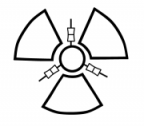Manual on how to run multiple scripts from one terminal.
- ThibmoRozier
-
 Topic Author
Topic Author
- Offline
- Elite Member
-

10 years 11 months ago - 10 years 11 months ago #595
by ThibmoRozier
Hello,
This short manual will explain how to use "screen" to create an environment with names screens to go back to and to terminate separately, in the case you would like to.
First off, the installation.
For Debian based Linux, like Ubuntu, Mint and Raspbian:
For Redhat based linux, like CentOS:
For OpenSUSE based linux:
Then, a small explanation on how to use screen:
For in-screen commands you must always use |CTRL| and |A| followed by the command key.
For example, you wish to close the screen but keep the screen and it's child process running, one presses |CTRL| and |A| and |D| at the same time, this is called "Detaching the screen".
Then to stop the script and the screen at the same time, press |CTRL| and |C| at the same time.
Here a list of commands:
Now, we want to start the screen.
It is always best to first navigate the terminal to the right directory, using the "cd" command.
Like "cd ~/pyradmon"
Then to start the screen, one can use a variety of commands, I will only cover two.
Showing what screens you have running:
Reattaching to the screen:
Don't forget to keep the terminal opened, or I can not guarantee that the screen+script will remain running!
Thank you for reading and I hope it helped you out.
This short manual will explain how to use "screen" to create an environment with names screens to go back to and to terminate separately, in the case you would like to.
First off, the installation.
For Debian based Linux, like Ubuntu, Mint and Raspbian:
sudo apt-get install screenFor Redhat based linux, like CentOS:
yum install screenFor OpenSUSE based linux:
yast -i screenThen, a small explanation on how to use screen:
For in-screen commands you must always use |CTRL| and |A| followed by the command key.
For example, you wish to close the screen but keep the screen and it's child process running, one presses |CTRL| and |A| and |D| at the same time, this is called "Detaching the screen".
Then to stop the script and the screen at the same time, press |CTRL| and |C| at the same time.
Here a list of commands:
break ^B b
clear C
colon :
copy ^[ [
detach ^D d
digraph ^V
displays *
dumptermcap .
fit F
flow ^F f
focus ^I
hardcopy h
help ?
history { }
info i
kill K k
lastmsg ^M m
license ,
lockscreen ^X x
log H
login L
meta a
monitor M
next ^@ ^N sp n
number N
only Q
other ^A
pow_break B
pow_detach D
prev ^H ^P p ^?
quit \
readbuf <
redisplay ^L l
remove X
removebuf =
reset Z
screen ^C c
select '
silence _
split S
suspend ^Z z
time ^T t
title A
vbell ^G
version v
width W
windows ^W w
wrap ^R r
writebuf >
xoff ^S s
xon ^Q q
^] paste .
" windowlist -b
- select -
0 select 0
1 select 1
2 select 2
3 select 3
4 select 4
5 select 5
6 select 6
7 select 7
8 select 8
9 select 9
I login on
O login off
] paste .Now, we want to start the screen.
It is always best to first navigate the terminal to the right directory, using the "cd" command.
Like "cd ~/pyradmon"
Then to start the screen, one can use a variety of commands, I will only cover two.
To start the screen with the script and keep it attached:
screen -m -S {screen name} python pyradmon.py
To start the screen, let is run and come back to do other things with the terminal:
screen -d -m -S {screen name} python pyradmon.pyShowing what screens you have running:
screen -lsReattaching to the screen:
screen -r {Screen name}Don't forget to keep the terminal opened, or I can not guarantee that the screen+script will remain running!
Thank you for reading and I hope it helped you out.
Last edit: 10 years 11 months ago by ThibmoRozier. Reason: Making sure I won't get a session time-out whilst writing this manual. :P
The following user(s) said Thank You: mw0uzo
Please Log in or Create an account to join the conversation.
Moderators: Gamma-Man
Time to create page: 0.148 seconds

